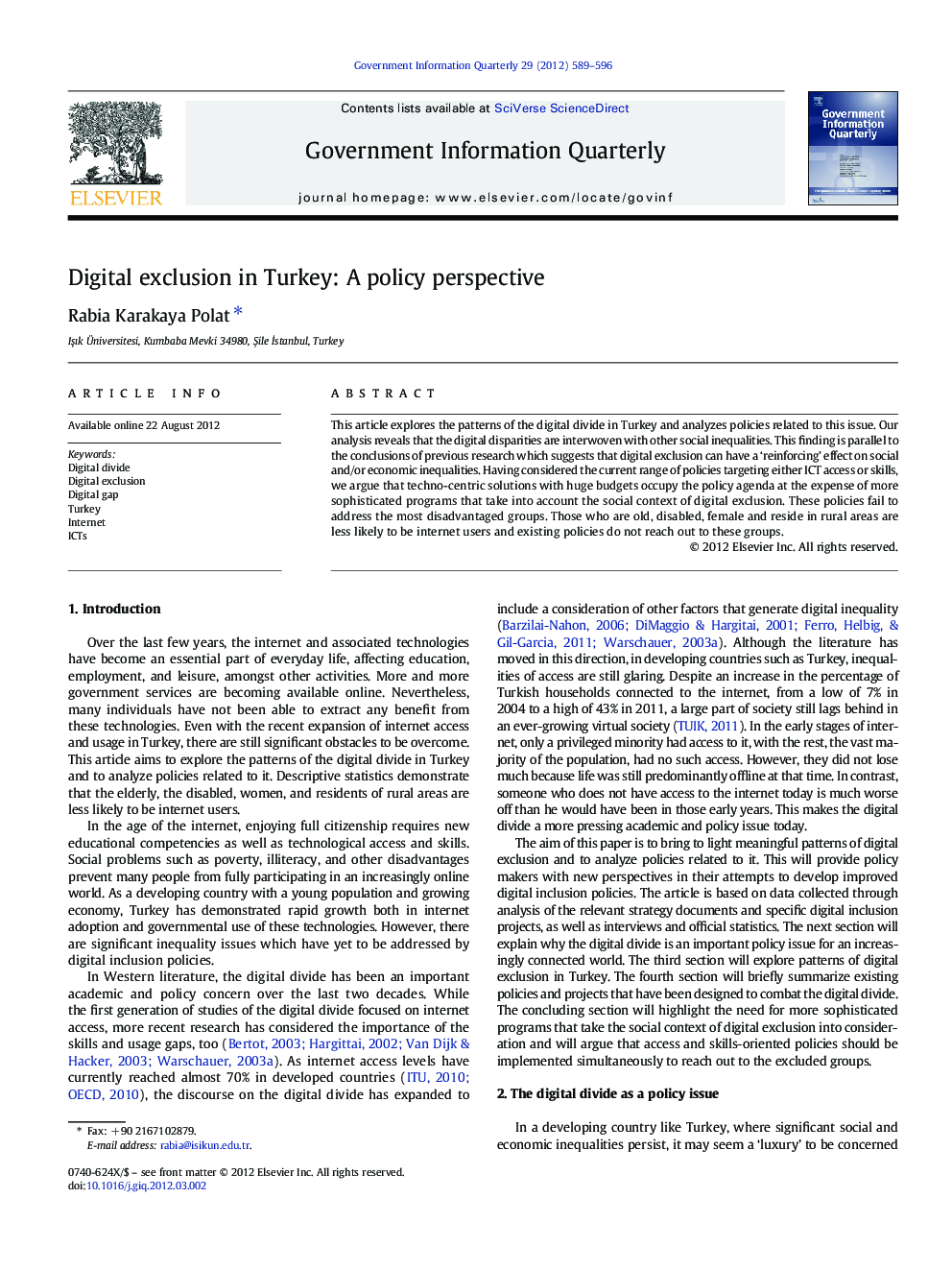| Article ID | Journal | Published Year | Pages | File Type |
|---|---|---|---|---|
| 1024561 | Government Information Quarterly | 2012 | 8 Pages |
This article explores the patterns of the digital divide in Turkey and analyzes policies related to this issue. Our analysis reveals that the digital disparities are interwoven with other social inequalities. This finding is parallel to the conclusions of previous research which suggests that digital exclusion can have a ‘reinforcing’ effect on social and/or economic inequalities. Having considered the current range of policies targeting either ICT access or skills, we argue that techno-centric solutions with huge budgets occupy the policy agenda at the expense of more sophisticated programs that take into account the social context of digital exclusion. These policies fail to address the most disadvantaged groups. Those who are old, disabled, female and reside in rural areas are less likely to be internet users and existing policies do not reach out to these groups.
► We examine digital divide policy in Turkey by analyzing patterns of digital exclusion. ► We find significant inequalities in Internet use based on age, gender, geography and disability. ► We make our analysis in two categories: access based and skill based policies. ► We find that existing policies fail to address the most disadvantaged groups. ► Digital disparities are interwoven with other social inequalities; techno-centric solutions are not enough to address them.
